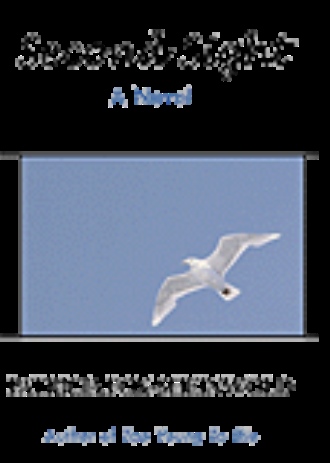Second Sight
by
Book Details
About the Book
At a pivotal point in her life, Margaret, barely 40, accidentally meets a 25-year old blind musician on a train. Both are traveling to Nevada: she, for a divorce; he, for his first job out of New York on his own. By the second day, having spent some "get acquainted" time together, they decide to "jump train" and drive across the country stopping off along the way to do some sight-seeing.
Slowly, they become comfortable with each other, especially when their mutual love of jazz is discovered and, specifically as Margaret learns, through Neil, how to accompany him through his sightless world. The events that occur and unfold bring about a total metamorphosis in the appraisal each has of himself, resulting in who they really are as opposed to who they think/thought they were.
The story is parallel structured: The top level is what happens during their two-week drive; the underneath layer, told in alternating chapters, is a replay of Margaret´s early tumultuous and tragic years, but tantamount to the ongoing story.
Because Neil is sightless, he sees the real Margaret; because it is too painful for Margaret to look at herself and her life, she takes the time to really look at Neil.
The love story is short-lived; its effect -- lifelong.
About the Author
American author whose work
includes biographies, essays, a children's book, a crossword puzzle dictionary,
an autobiography about her life as a bridge champion, and a novel. The
diversity of subjects reflect the multi-faceted interests of Fox-Sheinwold.
A ninth
generation Marylander, she grew up the only child of socialite parents who
encouraged her to follow her own path. While in high school, she suffered a
severe injury in a car crash, which ended her intended career in ballet after
eleven years of study.
"Countless
hours at the barre were followed by endless hours soaking in a hot bath
of Epsom Salts but it was rewarding pain and eventually became passionate pain
when I realized that dancing would be my life's work. My love of music and joy
of dancing have come together; I don't rely on dancing to interpret the music
or music to explain the dance." (from Second Sight, 2001)
After a brief marriage and the
birth of a son, the author frequently reflected on the tragedy and triumph of
the great ballerina, Tanaquil LeClercq, who, at the height of her career, was
struck down by polio but courageously went forward to have a second career as a
photographer.
Although Fox-Sheinwold had dabbled
in writing in high school and college, it was not until she married syndicated
columnist Alfred Sheinwold that the idea of becoming a full-time writer took
shape. As a national bridge champion, and using the game as a metaphor for
life, she launched her career in 1976 with a first book, "Husbands And
Other Men I've Played With: Bridge That Is."
In 1978, she wrote, "Too
Young To Die," a collection of biographies of entertainers, all of
whom died under the age of forty. The first edition spans six decades;
subsequent editions eight; each contains hundreds of photographs and is updated
every several years. Following this, she reversed course and wrote, "Gone
But Not Forgotten" (1980), another collection of biographies of
entertainment figures but ones who lived well into their seventies and
eighties.
Her next two efforts were in
direct contrast to the previous books. She compiled "The Crossword Puzzler's
Dictionary" and a do-it-yourself child's book, "The Jolly Time Party
Book for Children." She felt that both books enabled her to stretch as a
writer and would enlarge her audience.
When Field Syndicate requested a
4-part series on any subject, she chose one very close to her heart: "The
Emotional Makeup of Those Born Blind as Opposed to [Those] Adventitiously
Blinded." It was submitted for a Pulitzer consideration.
<


